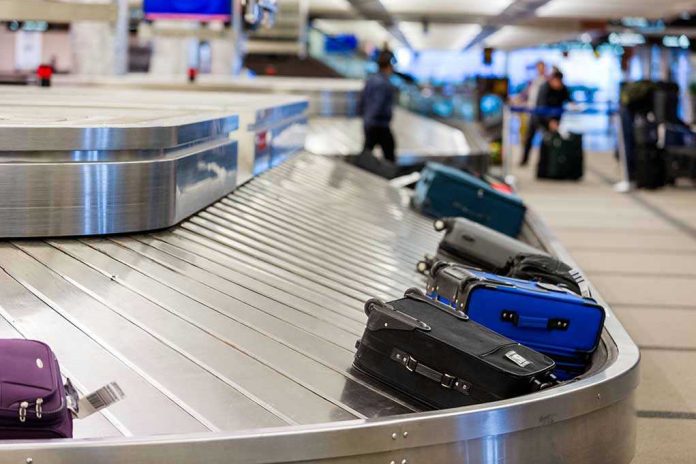
America’s airports ground to a halt—not because of weather, terror, or technical failure, but because Congress let the lights go out on the nation’s air traffic nerve center.
Story Snapshot
- Major US airports, including Newark, Logan, LAX, and SFO, suffered ground stops and flight delays from severe staffing shortages.
- The government shutdown’s 26-day standoff directly stalled travel, stranding both planes and people.
- The FAA and Transportation Secretary chose safety over speed, slowing or stopping air traffic as controller ranks thinned.
- Travelers, airlines, and the broader economy felt the ripple effects as the shutdown exposed the fragility of America’s aviation infrastructure.
Shutdown Stalemate Paralyzes US Air Travel
Chaos rippled through airports from coast to coast as the government shutdown reached day twenty-six. Newark Liberty, Logan International, Los Angeles International, and San Francisco International all experienced ground stops that left aircraft idling on tarmacs and passengers fuming at terminals. Delays stretched from 15 minutes to nearly an hour and a half, a consequence not of storms or technical glitches, but of a federal funding lapse that starved the Federal Aviation Administration of personnel at the most critical moment.
These weren’t isolated hiccups. The scale was unprecedented: simultaneous disruptions at multiple major hubs, with the FAA forced to issue ground stops to preserve safety as air traffic controller staffing withered. The Transportation Secretary publicly declared that if safety could not be guaranteed, air travel would be slowed or stopped entirely—a blunt admission that America’s aviation lifeline was now hostage to political gridlock.
How a Political Crisis Became an Aviation Emergency
Government shutdowns in the US are not new, but rarely do they so visibly and rapidly disrupt daily life for millions. This time, the budget impasse in Congress cut off pay for the FAA’s essential workforce. Air traffic controllers—already working one of the most stressful jobs in the country—were suddenly expected to keep the skies safe without paychecks. As financial pressure mounted, absenteeism climbed. The FAA’s response was clear and immediate: if controller ranks dip below what’s needed for safe operations, flights will stop, period.
Transportation Secretary Sean Duffy and FAA leadership made safety their mantra, even as the traveling public and airline executives clamored for answers. “If I don’t feel like I have enough controllers or enough controllers that are focused, we will slow down traffic, we will stop traffic,” Duffy asserted, making clear that convenience would not trump caution. The FAA’s own communications were terse, often limited to “automatic replies” citing a “lapse in funding” and warning of ongoing operational challenges.
Ripple Effects: Passengers, Airlines, and the American Economy
Flight delays and cancellations quickly snowballed into national headlines, but the impact ran deeper than missed connections. Passengers found themselves stranded or rerouted, often with little information about when relief might come. Airlines scrambled to adjust schedules and manage customer expectations, while airport employees braced for the mounting frustration. Every delayed flight set off a chain reaction—affecting not just leisure travelers, but business, cargo, and the broader logistics web that underpins the economy.
Experts warned that the longer the shutdown dragged on, the greater the risk of long-term damage. Public trust in the reliability of the aviation system eroded with each passing day. Industry analysts noted that repeated shutdowns could drive experienced controllers to other careers, deepening staffing crises and jeopardizing future safety. Calls for policy reform grew louder, with some arguing that essential services like air traffic control should be shielded from political brinkmanship entirely.
The Lessons—and Looming Questions—of America’s Aviation Gridlock
The 2019 shutdown offered a preview, but this episode went further, exposing a glaring vulnerability: America’s critical infrastructure can be derailed not just by external threats, but by internal dysfunction. The FAA’s willingness to halt air travel in the name of safety sent a sobering message—one that resonated far beyond the confines of airport concourses.
As the shutdown continued with no resolution in sight, the question shifted from when flights would resume to what lasting changes, if any, would emerge from the crisis. Would lawmakers heed the warning and insulate the aviation sector from future shutdowns? Or would this episode become just another chapter in the growing narrative of American institutional fragility? For now, the runways remain a symbol of both America’s reach and its risk—a system that can soar, but only if the nation’s leaders keep it fueled.
Sources:
FAA National Airspace System Status












